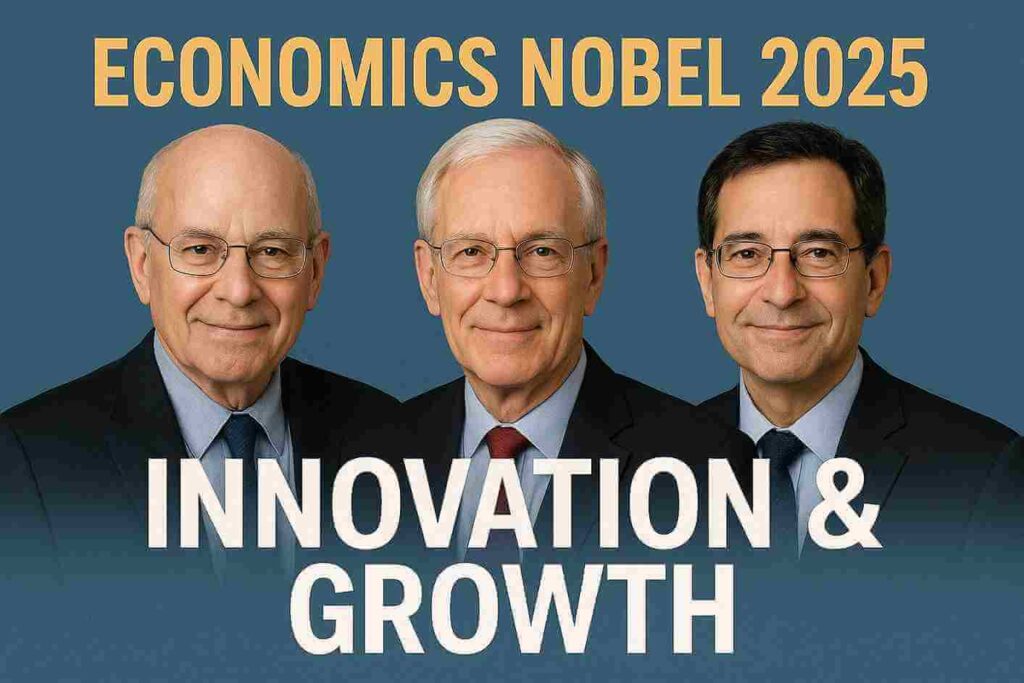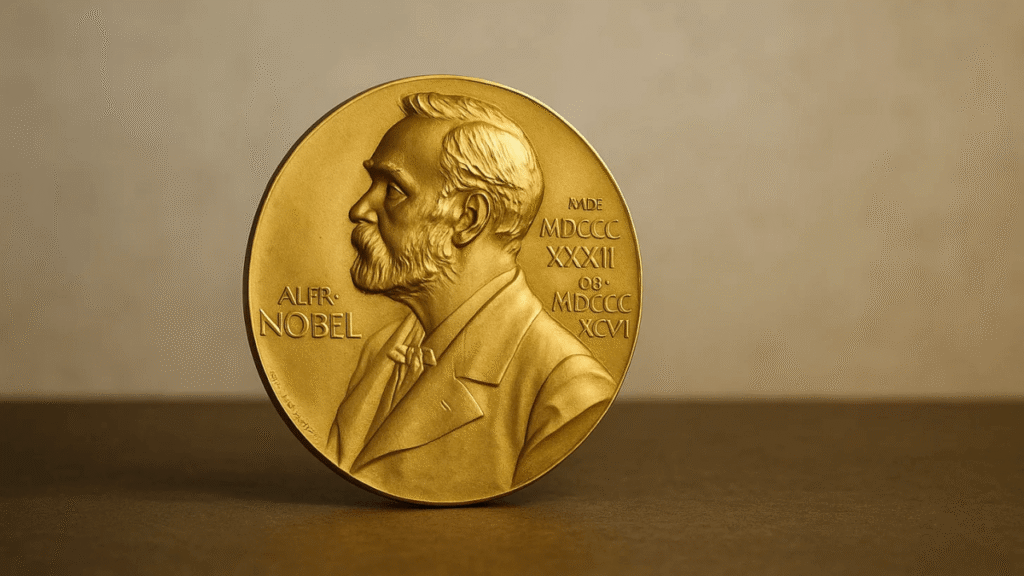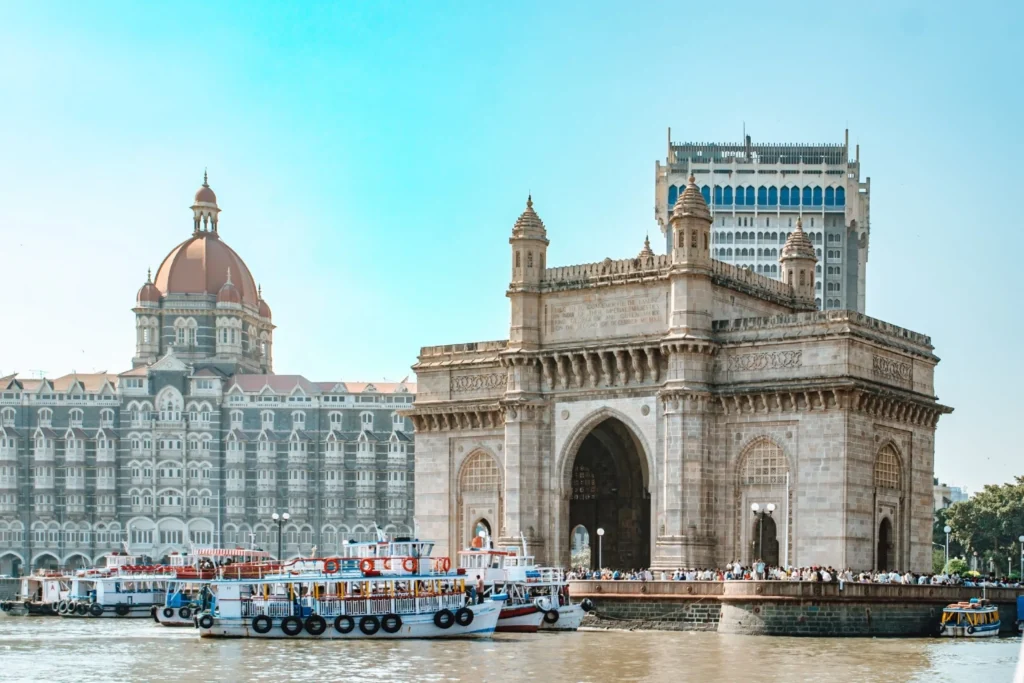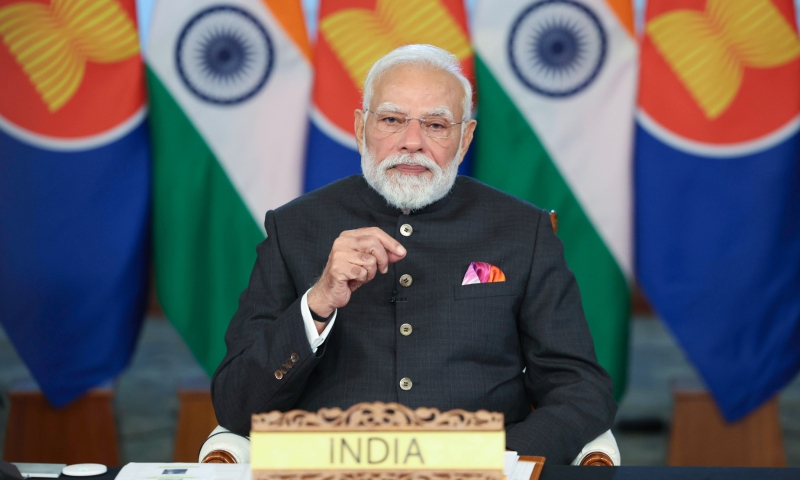
The Nobel Prize in Economic Sciences 2025 was awarded to Joel Mokyr, Philippe Aghion and Peter Howitt on 13 October 2025 “for having explained innovation-driven economic growth”. Mokyr was recognised “for having identified the prerequisites for sustained growth through technological progress”, while Philippe Aghion and Peter Howitt were awarded “for the theory of sustained growth through creative destruction”. Together, they have shown how new technology drives sustained economic growth and how innovation provides the ongoing impetus for progress.
Sustaining Economic Growth
The contributions of the two groups of laureates are complementary. Mokyr explains economic growth by examining historical and cultural conditions, whereas Aghion and Howitt explain how growth maintains itself through competition and innovation using mathematical models.
Mokyr examined data from Sweden and Britain between the early 1300s and 1700s and concluded that there was barely any long-term economic growth. When plotted on a graph, growth during this period appears nearly flat, like a long plateau. Everything changed after the Industrial Revolution. From that point onward, growth replaced stagnation as the new normal. Economies began expanding steadily—a pattern that continues to this day.

Technological advancement has consistently transformed societies by replacing outdated processes and products with better alternatives. This forms the foundation for sustained economic growth, contributing to improved standards of living across the world. Today, fast GDP growth is a prerequisite for political legitimacy. Countries such as China and India have grown at over 7% for decades. Yet such rapid economic growth was absent for most of human history. The key difference is innovation—modern economies innovate and grow, while historical economies stagnated.
Innovation
Innovation is the fundamental driver of modern prosperity. It creates wealth and enables societies to break free from historical stagnation. The 2025 Nobel laureates showed that sustained growth occurs only when discoveries are systematically expanded through continuous technological progress.
Innovation increases productivity, enabling more output from the same resources and thus raising living standards. Through the process of creative destruction, new technologies replace outdated ones, driving competition and reinforcing continuous improvement. Innovation also generates high-value jobs and strengthens global competitive advantage.
Change Management

While Mokyr drew insights from economic history, Aghion and Howitt constructed formal models. Yet all of them came to the same conclusion— sustained economic growth requires a society that embraces innovation and is open to change—even when change is disruptive or uncomfortable.
Research & Development
Economic growth cannot be taken for granted. Societies must uphold and nurture mechanisms that encourage innovation and creative destruction. Mokyr explained why many brilliant pre-modern inventions failed to trigger continuous progress: they lacked a supportive ecosystem that could build upon them. He identified three prerequisites for sustained growth:
- Society must promote both scientific understanding and practical applications.
- Innovative entrepreneurs and skilled manpower are needed to convert the scientific ideas into products.
- Societies must be open to new ideas and tolerate disruption.
Creative Destruction
The term “creative destruction”, popularised by Joseph Schumpeter in Capitalism, Socialism and Democracy (1942) and rooted in the analysis of Karl Marx, describes the cycle of innovation dismantling long-standing practices and industries while simultaneously creating new ones. This process drives economic growth by introducing new technologies and products that render older ones obsolete.
Examples are all around us: smartphones replaced earlier phones; digital cameras replaced film cameras. Mokyr, Aghion, and Howitt show that modern growth is a turbulent process of creation and destruction, sustained only when supported by cultural openness and social support.
Lessons for India

India aims to be a major global innovation hub. Progress is already visible in pharmaceuticals, IT services, engineering solutions, space technology, and digital innovations such as UPI, which has enabled large-scale financial inclusion.
Applying the insights of the Nobel laureates, India must innovate to strengthen its scientific and technological foundations to secure global leadership.
National Education Policy 2000
According to the National Education Policy 2000, research and innovation in higher education institutions are critical. Yet India’s R&D investment is just 0.69% of GDP, far lower than the United States (2.8%), China (2.1%), Israel (4.3%), and South Korea (4.2%). These countries invest over three times more of their GDP on R&D.
India should build world class multidisciplinary universities and innovation clusters. While government should provide the basic infrastructure and initial support, industry must ultimately drive R&D based on the market mechanism as innovation shapes business performance and competitiveness.
Entrepreneurship
Innovative entrepreneurship is essential for transforming scientific knowledge into practical solutions. Entrepreneurship generates new processes, products, and services, and takes ideas from concept to market. Strong intellectual property protections are necessary to encourage risk-taking and reward innovation.
Innovation and entrepreneurship must be incentivised to encourage new ideas and products. A robust regimen of Intellectual Property Rights will encourage the process
Entrepreneurship is a must for sustained economic growth. Entrepreneurship as the process of designing, launching, and managing a new business can bring in innovative and risk-taking initiatives leading to economic and social value.
Skill Development
Skills development—technical and soft—is critical for adapting to new technologies and a changing labour market. Upskilling and reskilling the workforce ensures that innovation translates into broad-based economic growth in the environment of globalisation.
Social Support
Societal acceptance of innovation is equally important. Ideas often fail because society resists change. Public policies must encourage an innovation-friendly culture. The goals of Atma-Nirbhar Bharat, Make-in-India, and Swadeshi initiatives must be supported by the abiding national pride, consumer preference for Indian products and cultural confidence.

Conclusion
The urgency of scientific developments, R&D, technology adoption, innovation, and self-reliance must be communicated clearly to young minds across schools and universities so that they can contribute to India’s growth trajectory in the mission mode. The vision of building Viksit Bharat@2047 requires commitment, collaboration, and national pride—with Gen Z leading the journey towards an innovative and prosperous India.

